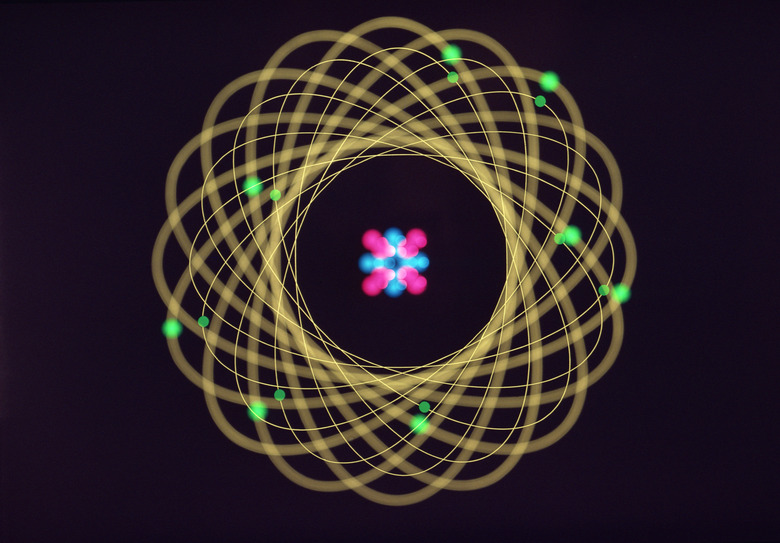Why Do Valence Electrons Affect The Atomic Radius Of An Element?
The atomic radius of an element is the distance between the center of an atom's nucleus and its outermost, or valence electrons. The value of the atomic radius changes in predictable ways as you move across the periodic table. These changes are caused by the interaction between the positive charge of the protons in the nucleus and the negative charge of all the atom's electrons.
Energy Levels
Energy Levels
Electrons orbit the nucleus of an atom at different energy levels. Within these energy levels their orbitals can take a number of different shapes, called subshells. Subsequently, each subshell can accommodate a specific number of orbitals. As you add electrons to an existing energy level, the orbitals in a subshell will fill up until the subshell holds the maximum possible electrons. Once all of the subshells at a specific energy level have filled up, further electrons must be added to a subshell in a higher energy level. As energy levels increase in value, so does their distance from the atom's nucleus.
Trends Across a Period
Trends Across a Period
The atomic radii of the elements change in a predictable, periodic way. As you move from left to right across a main group period of the periodic table, atomic radii decrease. At the same time, the number of valence electrons increases. The reason for the left to right decrease in atomic radius is that the net nuclear charge increases but the energy level of the possible electron orbitals does not. In other words, when a new electron is added in an already-occupied energy level, the radius does not expand notably. Instead, with a stronger positive charge coming from the nucleus, the electron cloud is pulled inward, resulting in a smaller atomic radius. The transition metals deviate slightly from this trend.
Shielding
Shielding
The periodic trend in atomic radii is attributable to a phenomenon known as shielding. Shielding refers to the way in which the inner electrons of an atom shield some of the positive charge of the nucleus. Therefore, the valence electrons only feel a net positive charge. This is called the effective nuclear charge. As you move across a period, the number of valence electrons changes, but the number of inner electrons does not. Therefore, the effective nuclear charge increases, causing the valence electrons to pull inward.
Trends Down a Group
Trends Down a Group
As you move down a group of the periodic table, the energy level of the valence electrons increases. In this case, the overall number of valence electrons does not change. For example, both sodium and lithium have one valence electron, but sodium's exists at a higher energy level. In such a case, the overall distance between the center of the nucleus and the valence electrons is larger. While the number of protons has also increased at this point, the increased positive charge of these protons is offset by another energy level's worth of inner shielding electrons between the nucleus and the valence electrons. Therefore, the atomic radius increases down a group.
Cite This Article
MLA
Murmson, Serm. "Why Do Valence Electrons Affect The Atomic Radius Of An Element?" sciencing.com, https://www.sciencing.com/valence-electrons-affect-atomic-radius-element-23574/. 24 April 2017.
APA
Murmson, Serm. (2017, April 24). Why Do Valence Electrons Affect The Atomic Radius Of An Element?. sciencing.com. Retrieved from https://www.sciencing.com/valence-electrons-affect-atomic-radius-element-23574/
Chicago
Murmson, Serm. Why Do Valence Electrons Affect The Atomic Radius Of An Element? last modified March 24, 2022. https://www.sciencing.com/valence-electrons-affect-atomic-radius-element-23574/
